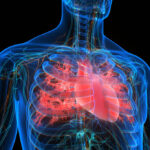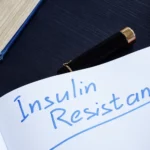- Home
- Who We Are
- Shop
- Products
- GlycoCheck
- The Science
- Study: Improving Aortic Aging with Endocalyx Pro
- Improve Vascular Health with This Supplement
- Promising Supplement for Kidney Health
- Inositol & Insulin Resistance
- PEMF Therapy Benefits
- Maximizing Mediterranean Diet Benefits
- Glycocalyx (eGC): What is Endothelial Glycocalyx?
- 9 Tips for a Healthy Aging Lifestyle
- More Science….
- News & Events
- Join
- Login

Alteration of the sublingual microvascular glycocalyx in critically ill patients
Abstract
Glycocalyx degradation may contribute to microvascular dysfunction and tissue hypoperfusion during systemic inflammation and sepsis. In this observational study we evaluated the alteration of the sublingual microvascular glycocalyx in 16 healthy volunteers and 50 critically ill patients. Sidestream Dark Field images of the sublingual microcirculation were automatically analyzed by dedicated software. The Perfused Boundary Region (PBR) was calculated as the dimensions of the permeable part of the glycocalyx allowing the penetration of circulating red blood cells, providing an index of glycocalyx damage. The PBR was increased in ICU patients compared to healthy controls (2.7 [2.59–2.88] vs. 2.46 [2.37–2.59] μm, p < 0.0001) and tended to be higher in the 32 septic patients compared to non-septics (2.77 [2.62–2.93] vs. 2.67 [2.55–2.75] μm, p = 0.05), suggesting more severe glycocalyx alterations. A PBR of 2.76 showed the best discriminative ability towards the presence of sepsis (sensitivity: 50%, specificity: 83%; area under the receiver operating characteristic curve: 0.67, 95% CI 0.52–0.82, p = 0.05). A weak positive correlation was found between PBR and heart rate (r = 0.3, p = 0.03). In 17 septic patients, a correlation was found between PBR and number of rolling leukocytes in post-capillary venules (RL/venule) (r = 0.55, p = 0.02), confirming that glycocalyx shedding enhances leukocyte–endothelium interaction.
Science Articles
Quick Navigation
Contact Info
NuLife Sciences, Inc.
7407 Ziegler Rd
Chattanooga, TN 37421
(800) 398-9842




